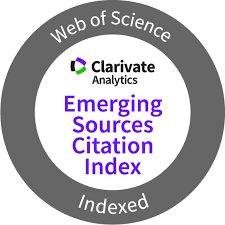Sinification of the World Tourism and Public Relations: What to Do with Western-Originated Public Relations as a Response? / Sinificación del turismo mundial y Relaciones Públicas:¿Qué hacer con las Relaciones Públicas de origen occidental como respuesta
DOI:
https://doi.org/10.5783/revrrpp.v8i16.548Keywords:
Chinese outbound tourists, public relations, sinification of the world tourism, Turistas salientes chinos, relaciones públicas, sinificación del turismo mundial, relaciones públicas para el turismo, segmentación turística y relaciones públicas críticas.Abstract
In this study, we presented and discussed the challenges posed for Western-originated public relations by sinification of the world tourism. Chinese international tourists are now on the top of the list of world travelers. Many countries try to attract Chinese tourists with all the tools available to them. However, public relations field has an inherent deficiency which is its Western assumptions that are often go unnoticed. This article points out why such a model is far from being conducive to promoting a destination for Chinese tourists. First of all it ignores guanxi which is a cultural construct that is influential over commercial relations in China. Secondly, its unit of analysis (i.e. individuals) is problematic. Thirdly, it is not applicable in a context where government is the major actor rather than the consumers. The article also includes discussions on how to segment Chinese outbound tourists, and PR interventions and recommendations. Although the scope of the article involves how to attract Chinese tourists to a particular destination, we also keep a critical view on the topic considering the potential negative consequences of the arrival of a higher number of Chinese tourists.
Keywords: Tourism, Chinese tourism, public relations, Western values, guanxi
Resumen
En este estudio presentamos y discutimos los desafíos planteados para las relaciones públicas de origen occidental debido a la significación del turismo mundial. Los turistas chinos son unos de los principales viajeros internacionales del mundo. Muchos países intentan atraer a los turistas chinos con todas las herramientas disponibles para ello. Sin embargo, el campo de las relaciones públicas tiene una deficiencia inherente que son sus suposiciones occidentales yb que a menudo pasan desapercibidas. Este artículo señala por qué este modelo está lejos de ser propicio para promover un destino para los turistas chinos. En primer lugar, ignora el guanxi, que es un constructo cultural que influye en las relaciones comerciales en China. En segundo lugar, su unidad de análisis (es decir, los individuos) es problemática. En tercer lugar, no es aplicable en un contexto donde el gobierno es el actor principal en lugar de los consumidores. El artículo también incluye discusiones sobre cómo segmentar a los turistas chinos, e intervenciones y recomendaciones de relaciones públicas. Aunque el alcance del artículo involucra cómo atraer a los turistas chinos a un destino en particular, también mantenemos una visión crítica sobre el tema considerando las posibles consecuencias negativas de la llegada de un mayor número de turistas chinos.
Palabras claves: Turismo, turismo chino, relaciones públicas, valores occidentales, guanxi
Downloads
References
Arita, S., Edmonds, C., Croix, S. L., & Mak, J. (2011). Impact of Approved Destination Status on Chinese travel abroad: an econometric analysis. Tourism Economics, 17(5), 983-996.
Arita, S., La Croix, S., & Mak, J. (2012). How China’s Approved Destination Status Policy Spurs and Hinders Chinese Travel Abroad. Working papers of the Economic Research Organisation at the University of Hawaii.-October 19, (2012-6), 20.
Bellini, N., Baratta, V., Loffredo, A., & Rovai, S. (2014, November). Chinese tourists in Tuscany: Redefining the relationship between heritage and authenticity. In Proceedings of the Heritage, Tourism and Hospitality International Conference HTHIC (pp. 104-115).
Bulatović, I., Stranjančević, A., Lacmanović, D., & Raspor, A. (2016). The factors of satisfaction among Chinese tourists in Montenegro and Slovenia. Research in Social Change, 8(2), 95-115.
Chen, N. C., & Šegota, T. (2015). Resident attitudes, place attachment and destination branding: a research framework. Tourism and Hospitality Management, 21(2), 145-158.
Chen, S., & Noci, G. (2014). Segmenting Chinese tourists by the expected experience at theme parks. Procedia-Social and Behavioral Sciences, 109, 1230-1236.
Chen, X. P., & Chen, C. C. (2004). On the intricacies of the Chinese guanxi: A process model of guanxi development. Asia Pacific Journal of Management, 21(3), 305-324.
Cheng, R. J. (2017). Travel Party Composition on Attitudes and Behaviors Among Chinese Tourists in Taiwan. Global Journal of Business Research, 11(1), 1-12.
Cheng, Y. (2016). Social Media Keep Buzzing! A Test of The Contingency Theory in China’s Red Cross Credibility Crisis. International Journal of Communication, 10, 3241-3260.
Chiu, W., & Zeng, S. (2016). Determinants of Chinese Tourists' Loyalty to Korea: A Comparison of Film and Non-film Tourist Perceptions. International Journal of Social Science and Humanity, 6(9), 667.
Chomvilailuk, R., & Vajirakachorn, T. (2015). Comparison for the effects of Chinese and Western tourists’ perceived images of food tourism facilities on destination selection: Case of Thailand’s food tourism. In Third International Conference on Advances in Social Science, Management and Human Behaviour-SMHB. Accessed
https://www.researchgate.net/profile/Rojanasak_Chomvilailuk/
Culbertson, H. M., & Chen, N. (2003). Public relations in mainland China: An adolescent with growing pains. In K. Sriramesh & D. Verčič (eds.). The Global Public Relations Handbook (pp. 59-81). New Jersey: Lawrence Erlbaum Associates.
Davis, L., Qiu, X., & Davis, D. (2017). Chinese tourists' shopping behavior in the United States. International Textile and Apparel Association (ITAA) Annual Conference Proceedings. https://lib.dr.iastate.edu/cgi/viewcontent.cgi?article=2234&context=itaa_proceedings
de Diesbach, P. B. (2012). Touristic destination ambassadors, case analysis and conceptualization. How to better understand and use brand ambassadors in cognitive, affective and experiential approaches. Tourism and hospitality management, 18(2), 229-258.
Ding, Y., & Ao, C. (2017). Research on Influencing Social Cultural Factors on Purchasing Decision Made by Chinese Tourists of Bangkok Bag with a Case Study Naraya. http://icmsit.ssru.ac.th/icmsit/fmsicmsit/images/Research-on-Influencing-Social-Cultural-Factors-on-Purchasing-Decision-Made-by-Chinese-Tourists-of-Bangkok-Bag-with-a-Case-Study-Naraya.pdf
Dongyang, Z., Mori, T., & Hayashi, K. (2015). A Study on Preferences and Behavioral Patterns of Chinese Tourists in Kansai Region, Japan. Konan Economic Papers, 55(1-2), 31-46.
Fernandez, D. R., Carlson, D. S., Stepina, L. P., & Nicholson, J. D. (1997). Hofstede's country classification 25 years later. The Journal of Social Psychology, 137(1), 43-54.
Goldman Sachs (2018). The Chinese tourism boom. Accessed
https://www.goldmansachs.com/insights/pages/chinese-tourist-boom.html
Guszkiewicz, P., & Nessel, K. (2017). Chinese tourists in Cracow, Poland: their profile, expectations, and perceptions. Polish Journal of Sport and Tourism, 24(1), 49-55.
Hackley, C. A., & Dong, Q. (2001). American public relations networking encounters China's guanxi. Public Relations Quarterly, 46(2), 16.
He, Y., & Yunke, H. (2010). An integrative approach to the Approved Destination Status tourism. International Business & Economics Research Journal, 9(10), 89-98.
Huang, C. C., & Lu, L. C. (2017). Examining the Roles of Collectivism, Attitude Toward Business, and Religious Beliefs on Consumer Ethics in China. Journal of Business Ethics, 146(3), 505-514.
Iliev, I., Ilieva, D., & Neikov, Y. (2015). The Potential For Attracting Chinese Tourists To Bulgaria'S Tourist Market. Narodnostopanski Arhiv, 68(3), 33-52.
Jun, X. (2015). Understanding the second wave of Chinese outbound tourists: Perceived service quality, satisfaction and loyalty towards Bangkok. In International conference on business, economics and management (ICBEM'15) (pp. 27-29). Phuket, Thailand: International Centre of Economics, Humanities and Management.
Kapiki, S., Fu, J., & Mu, L. (2014). Managing the knowledge for Chinese tourists: Establishment of Greece as a preferred destination. 2nd International Conference on Contemporary Marketing Issues (ICCMI) 2014, pp.81-86. Accessed https://www.researchgate.net/profile/Soultana_Kapiki
Kuo, L. (2018). China accuses Sweden of violating human rights over treatment of tourists. the Guardian, 17.09.2018. Accessed https://www.theguardian.com/world/2018/sep/17/china-accuses-sweden-of-violating-human-rights-over-treatment-of-tourists
Lau, C. K. H., Qiu, H. Q., Fan, D. X., & Milne, S. (2017). Exploring Chinese tourists’ constraints and facilitators of traveling to Pacific SIDS. Accessed
http://eprints.bournemouth.ac.uk/29761/3/HONG_KONG_2017_paper_168.pdf
Lee, P. K., & Humphreys, P. K. (2007). The role of Guanxi in supply management practices. International Journal of Production Economics, 106(2), 450-467.
Li, X. R., & Stepchenkova, S. (2016). America’s destination image as seen through Chinese outbound tourists’ eyes. Accessed
https://scholarworks.umass.edu/cgi/viewcontent.cgi?article=1604&context=ttra
Lin, C. J. (2014). Chinese tourists in Taiwan: Motivation and satisfaction. Journal of Management, 5(1), 20-35.
Lin, Z., He, G., & Vlachos, I. P. (2015). Britain in bloom? A study into Chinese tourists’ experience. EuroMed Journal of Business, 10(3), 297-310.
Liu, Z., Le Calvé, A., Cretton, F., Balet, N. G., Sokhn, M., & Délétroz, N. (2015). Linked Data Based Framework for Tourism Decision Support System: Case Study of Chinese Tourists in Switzerland. Journal of Computer and Communications, 3(5), 118-126.
Luo, Y., Huang, Y., & Wang, S. L. (2012). Guanxi and organizational performance: A meta-analysis. Management and Organization Review, 8(1), 139-172.
Lyu, J., Hu, L., Hung, K., & Mao, Z. (2017). Assessing servicescape of cruise tourism: the perception of Chinese tourists. International Journal of Contemporary Hospitality Management, 29(10), 2556-2572.
Lyu, J., Mao, Z., & Hu, L. (2018). Cruise experience and its contribution to subjective well‐being: A case of Chinese tourists. International Journal of Tourism Research, 20(2), 225-235.
Miao, Y. (2015). The Influence of Electronic-WOM on Tourists' Behavioral Intention to Choose a Destination: A case of Chinese Tourists Visiting Thailand. AU-GSB e-JOURNAL, 8(1), 13-31.
Moy, L. Y. Y., & Phongpanichanan, C. (2014). Does the status of a UNESCO World Heritage City make a destination more attractive to Mainland Chinese tourists? A preliminary study of Melaka. Procedia-Social and Behavioral Sciences, 144, 280-289.
Nielsen (2018). 2017 outbound Chinese tourism and consumption trends. Accessed https://www.nielsen.com/content/dam/nielsenglobal/cn/docs/Outbound%20Chinese%20Tourism%20and%20Consumption%20Trends.pdf
Noack, R. (2018). Beijing demands Swedish apology after Chinese tourists allegedly mistreated by police. the Washington Post, 17.09.2018.
Park, S. H., Lee, C. K., & Miller, J. C. (2015). A comparative study of the motivations, activities, overall satisfaction, and post-trip behaviors of international tourists in Macau: Mainland Chinese, Hongkongese, Taiwanese, and Westerners. Asia Pacific Journal of Tourism Research, 20(10), 1174-1193.
Piuchan, M., Chan, C. W., & Kaale, J. (2018). Economic and socio-cultural impacts of Mainland Chinese tourists on Hong Kong residents. Kasetsart Journal of Social Sciences, 39(1), 9-14.
Raspor, A., Lacmanović, D., & Popović, M. (2018). Chinese Tourists in Western Balkan: Facts and Forecast. Accessed https://www.researchgate.net/profile/Andrej_Raspor2
Raspor, A., Lacmanović, D., Stranjančević, A., Bulatović, I., Rašković, M., & Vlahović, S. (2016). Chinese tourists in Slovenia and Montenegro: preferences, characteristics and trip motivation. London: Vega Press Limited.
Rosyidi, M. I. (2018). The Characteristics of Chinese Tourists in Indonesia and Its Performance in 2013− 2017. Binus Business Review, 9(2), 145-152.
Smed, K. (2018). The emerging market of Chinese tourists: Exploring potentials in rural Denmark. Revista Turismo & Desenvolvimento, 2(27/28), 9-11.
Soroko, P., & Rashetnikau, D. (2016). Marketing activities of countries to attract Chinese tourists: trends and challenges. Accessed http://elib.bsu.by/bitstream/123456789/166192/1/94-102.pdf
Sriramesh, K. (2009). The relationship between culture and public relations. In K. Sriramesh & D. Verčič (eds.). the Global Public Relations Handbook, (pp.52-67). New Jersey: Lawrence Erlbaum Associates.
Sriramesh, K. (1992). Societal culture and public relations: Ethnographic evidence from India. Public Relations Review, 18(2), 201-211.
Sriramesh, K., & Takasaki, M. (1999). The impact of culture on Japanese public relations. Journal of Communication Management, 3(4), 337-352.
Sriramesh, K. & Verčič, D. (eds.). (2009) the Global Public Relations Handbook, (pp.187-211). New Jersey: Lawrence Erlbaum Associates.
Stranjančević, A., Bulatović, I., Lacmanović, D., & Raspor, A. (2016). Tourist Destination Strenghts and Opportunities: Is Montenegro Ready for Chinese Tourists?. Economics, 4(1), 151-164.
Sun, T., Horn, M., & Merritt, D. (2004). Values and lifestyles of individualists and collectivists: a study on Chinese, Japanese, British and US consumers. Journal of Consumer Marketing, 21(5), 318-331.
Suntikul, W., Tang, C., & Pratt, S. (2016). An exploratory study of Chinese tourists on Kenya safari tours. Journal of China Tourism Research, 12(2), 232-251.
Taylor, M., & Kent, M. L. (1999). Challenging assumptions of international public relations: When government is the most important public. Public Relations Review, 25(2), 131-144.
the European Commission (2018). Tourism in focus: The Chinese outbound travel market. Accessed https://ecty2018.org/wp-content/uploads/2017/08/EC-2016-The-Chinese-Outbound-Travel-Market.pdf
Tsujimoto, N. (2017). The purchasing behavior of Chinese tourists at popular visiting areas in Japan. Journal of Global Tourism Research, 2(2), 99-104.
UNWTO (2018a). UNWTO Tourism Barometer, March/April 2018. Accessed
http://cf.cdn.unwto.org/sites/all/files/pdf/unwto_barom18_02_mar_apr_excerpt__0.pdf
UNWTO (2018b). UNWTO Tourism Barometer, January 2018. Accessed
http://cf.cdn.unwto.org/sites/all/files/pdf/unwto_barom18_01_january_excerpt_hr.pdf
Vada-Pareti, S. (2015). The Chinese are coming–is Fiji ready? A study of Chinese tourists to Fiji. Journal of Pacific Studies, 35(3), 145-167.
Vonberg, J., Wright, R. & Halasz, S. (2018). China says Sweden violated tourists' human rights. CNN, 17.09.2018. Accessed https://edition.cnn.com/2018/09/17/world/sweden-chinese-tourists-intl/index.html
Wang, Y., He, X., & Bi, N. (2017). An exploratory research study on uncivilized behaviour based on mass media exposure: A case study of Chinese outbound tourists.
https://www.researchgate.net/profile/Zhenning_Xu2
Wiegel, W., & Bamford, D. (2015). The role of guanxi in buyer–supplier relationships in Chinese small-and medium-sized enterprises–a resource-based perspective. Production Planning & Control, 26(4), 308-327.
Wong, C. B., & Wong, K. L. K., H.C. Ng & M.H. Wong (2017). Mainland Chinese Tourists’ Expectations, Perceived Performance of and Satisfaction towards Shopping Malls in Hong Kong. GSTF Journal on Business Review (GBR), 2(3), 134-139.
Wong, I. A., & Li, X. (2015). Destination services and travel experience in the gaming Mecca: The moderating role of gambling as a travel purpose among Chinese tourists. Journal of Travel & Tourism Marketing, 32(1-2), 80-99.
WTOF (2018). Market research report on Chinese outbound tourist (city) consumption. Accessed http://ccilc.pt/wp-content/uploads/2017/07/relatorioturistachines.pdf
WTTC (2018). Travel & tourism economic impact - 2018 China. Accessed https://www.wttc.org/-/media/files/reports/economic-impact-research/countries-2018/china2018.pdf
Wu, J. Y. (2016). The representation of outbound Chinese tourists in the American news discourse. In Proceedings from the Second International Conference on Linguistics and Language Studies (pp. 270-283). Accessed https://www.researchgate.net/profile/Patrick_Chi_Wai_Lee
Wu, K., Raab, C., Chang, W., & Krishen, A. (2016). Understanding Chinese tourists' food consumption in the United States. Journal of Business Research, 69(10), 4706-4713.
Yang, F. X., & Lau, V. M. (2015). “LuXurY” hotel loyalty–a comparison of Chinese Gen X and Y tourists to Macau. International Journal of Contemporary Hospitality Management, 27(7), 1685-1706.
Yen, W. (2018). Chinese tourists and Swedish hostel staff could have avoided an ugly incident by thinking globally. South China Morning Post, 03.10.2018. Accessed
Yuniarto, H. (2017). Promoting Indonesian tourism to Chinese tourists through journalism strategies in Wechat. International Journal of Humanity Studies (IJHS), 1(1), 103-110.
Zeng, L., & Li, X. R. (2015). Understanding the “high consumption” phenomenon of Chinese outbound tourists. Accessed
https://scholarworks.umass.edu/cgi/viewcontent.cgi?article=1058&context=ttra
Zou, S. S., & Petrick, J. F. (2016). Segmenting Chinese Tourists with Perceived Constraints. Tourism in Marine Environments, 11(2-3), 109-122.
Downloads
Published
How to Cite
Issue
Section
License
Authors publishing in this journal agree to the following terms:
a. Authors retain copyright and grant the journal the right to be the first publication of the work as licensed under a Creative Commons Attribution License that allows others to share the work with an acknowledgement of authorship of the work and initial publication in this journal.
b. Authors may separately enter into additional arrangements for non-exclusive distribution of the version of the work published in the journal (e.g., placing it in an institutional repository or publishing it in a book), with an acknowledgement of initial publication in this journal.
c. Authors are allowed and encouraged to disseminate their work electronically (e.g. in institutional repositories or on their own website) before and during the submission process, as it can lead to productive exchanges, as well as earlier and higher citation of published work (see The Effect of Open Access).




